Continuous Inkjet Printers
Continuous Inkjet Printers
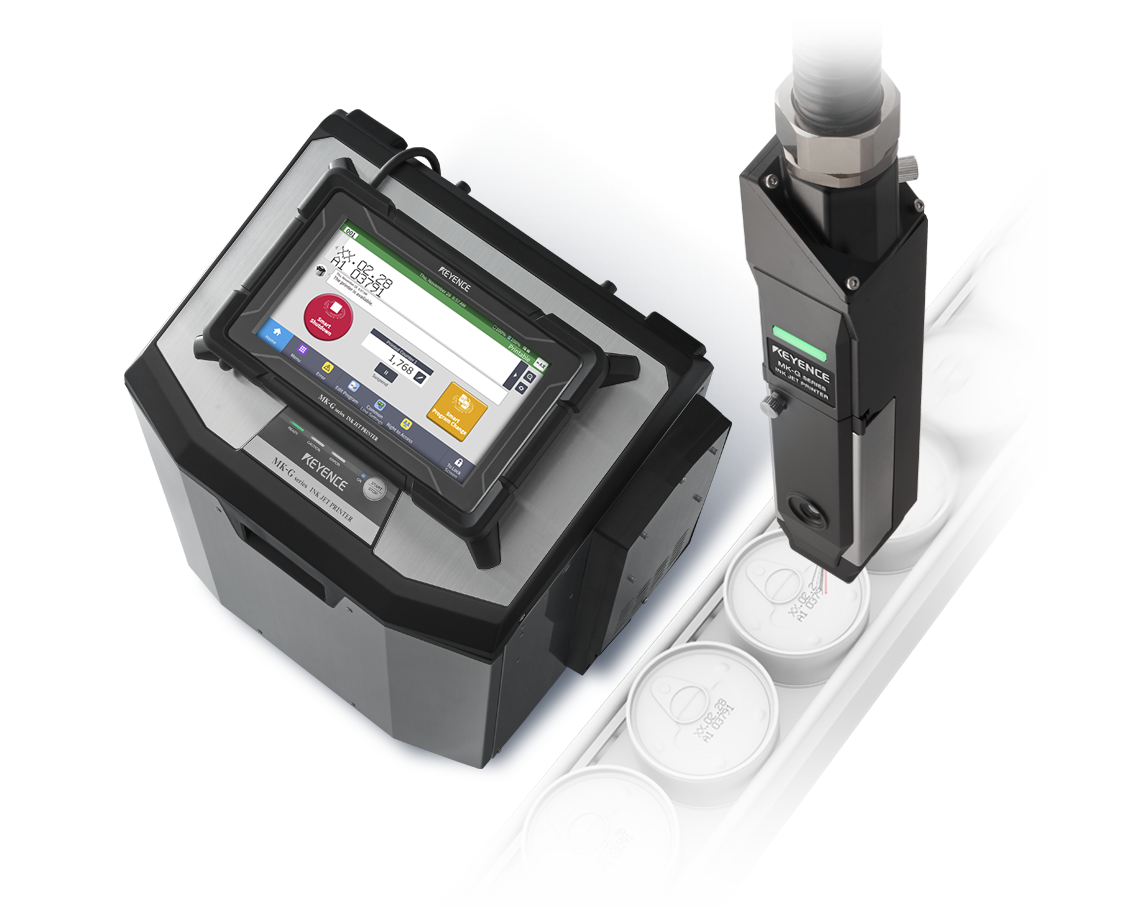
The MK-G series continuous inkjet printer (CIJ) minimizes the hassle of maintenance. Anyone can easily operate this printer regardless of technical knowledge or skill level, since troubleshooting and real-time quality checks are automatically performed with KEYENCE’s proprietary sensor technology.
Product Lineup
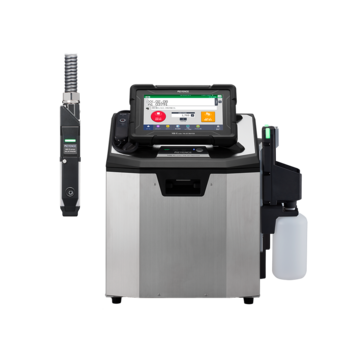
MK-G Series is the world's first self-troubleshooting continuous inkjet printer that completely eliminates the guesswork of inkjet maintenance and can be operated without any specialized product knowledge or skills. By incorporating KEYENCE sensor technologies to enhance self-diagnostic capabilities, the new MK-G Series can automatically perform maintenance and troubleshooting on its own – just like how a trained inkjet technician would. The unit features new functions that ensure automatic cleaning is performed every time before shutdown even when the power is disrupted, and allow users to check the status and perform operations on the printer remotely from a PC or Smartphone.
Features
Hands-free Cleaning [Auto-shower Cleaning]
The auto-shower cleaning function of the MK-G Series cleans not only the ink path but also all components necessary for maintaining print quality. Suction during cleaning also helps to reduce odors. After cleaning is complete, the built-in blower automatically dries the head.
Conventional head cleaning

Manual cleaning was required to wash residual ink off the inside of the head.
Auto-shower cleaning

In addition to cleaning the ink paths, the key parts of the head are also subject to high-pressure cleaning. This negates the need for manual cleaning.
Self-diagnosis Followed by Automatic Cleaning When Necessary
Smart Startup
To start the MK-G Series, simply press the Smart Startup button. The printer will automatically obtain the device status and select the necessary cleaning method. Cleaning is performed only when required and the minimum amount of solvent is used, significantly reducing running costs.

MK-G enables self-diagnosis and cleaning to ensure stable startup.
Discontinued Series
Continuous inkjet printers function by spraying closely controlled ink particles onto targets, such that clear and lasting marks are made. Inkjet printers are largely grouped into two categories: those that are connected to a PC for the office or home use, and continuous inkjet (CIJ) printers that are used on production lines in factories for purposes. KEYENCE’s MK-G Series is a continuous inkjet (CIJ) printer and is primarily used for printing expiration dates, lot numbers, barcodes/2D codes on products in factories, and warehouses. Blurring and product damage are inherently avoided from the non-contact nature of inkjet printing. This technology can print at high speeds from any direction or orientation and the compact head can be mounted easily onto packaging machines or filling machines, making installation painless. Count-up values and dates can be updated automatically to prevent printing incorrect data.
Benefits of Continuous Inkjet Printers
Continuous inkjet (CIJ) printers can print characters by spraying quick-drying ink in a non-contact manner, regardless of the material or shape of the targets. They have been used for printing lot codes, date codes, barcodes/2D codes on products, and are widely used in many industries.
In the food industry, continuous inkjet (CIJ) printers are mainly used for printing expiration dates and lot numbers in factories. Their targets include containers such as PET bottles and beer cans, packaging film of frozen food, aluminum pouch, jam jars, and coated cartons. The non-contact method allows direct printing on the curved surfaces of bottles or on film after contents are sealed. Other than the food industry, continuous inkjet (CIJ) printers are also used widely for printing information such as the length of extruded products including building materials and wires; lot numbers on cosmetics containers and boxes; and 2D codes on plated or coated surfaces of automotive parts and electronic components.
Continuous inkjet printers (CIJ) can print at high speeds from any direction or orientation. The compact head can be mounted easily onto packaging machines or filling machines, making installation painless.
Continuous inkjet (CIJ) printers have been installed and used in various types of packaging machines and filling machines. For example, horizontal/vertical pillow type packaging machines, rotary fillers, heat sealers, cartoners, hopper labelers, sealing machines, and cup sealers. Since printing on moving targets is possible, there is no need to stop the operation of packaging machines. If the movement speed varies, printing can be synchronized with an encoder. Installation in existing machines is easy in three steps: 1) install the dedicated attachment, 2) mount a sensor, and 3) install an encoder if necessary.
Continuous inkjet (CIJ) printers automatically update count-up/down values and dates, so printing data can be changed correctly without human errors.
Continuous inkjet (CIJ) printers have a calendar function for printing automatically-updated expiration or manufacturing dates. If you want to assign numbers to individual products to enhance traceability management, you can use a counter function to print serial numbers by counting up or down automatically. Moreover, you can change printing data via the packaging machine or filling machine by sending characters using Ethernet. This ensures the printing of correct data without mistakes.
Continuous Inkjet Printer Case Studies
Food, Pharmaceutical, and Cosmetics Industries
Continuous inkjet (CIJ) printers can be used to print expiration dates and lot numbers on individual packaging films for snacks, frozen food, and condiments. When installed in a pillow type packaging machine or rotary filler, a continuous inkjet (CIJ) printer can help prevent printing mistakes while improving manufacturing productivity. Continuous inkjet (CIJ) printers can also be used to print use-by dates and lot numbers on container bottles for pharmaceutical and cosmetic products. Installing a continuous inkjet (CIJ) printer on a conveyor belt carrying filled bottles allows printing information on the curved side or bottom of the bottles, which are difficult to print with stamps. Moreover, continuous inkjet (CIJ) printers can be used to print best-before dates and lot numbers on pudding, yogurt, and jelly cups filled by a cup sealer or deep-drawing packaging machine. Products filled in parallel can also be printed on by traversing the print head.
Electrical Machinery and Electronics Industries
Continuous inkjet (CIJ) printers capable of non-contact printing are widely used for products susceptible to damages. Marking on connectors, switches, and PCBs is commonly done by laser markers. Continuous inkjet (CIJ) printers, however, are used when laser marking can potentially cause damage to products such as insulating films, plating, or flexible PCBs, or when the marking contrast will be low due to the high heat resistance of the resin.
Continuous inkjet (CIJ) printers are also used for bad mark printing on defective products found by an inspection machine. Printing data can be switched based on the result obtained from the inspection machine such as for wafers, PCBs, and films. Continuous inkjet (CIJ) printers are useful because they can change printing data without producing foreign substances.
Automotive, Metal, and Other Industries
In the automotive industry, continuous inkjet (CIJ) printers capable of reliable non-contact printing are used for many applications. Non-contact printing of continuous inkjet (CIJ) printers is effective for printing on mufflers and aluminum wheels that have curved surfaces. Continuous inkjet (CIJ) printers are often used for products with plated or cation-painted surfaces to prevent corrosion. White or yellow ink is used to print on black-painted undercarriage parts.
Continuous inkjet (CIJ) printers are also used for printing on pipes and hoses made by extrusion molding. Once manufacturing starts, molding can continue for several days, which means that contact-type stamping cannot maintain sufficient printing quality. With a continuous inkjet (CIJ) printer, reliable printing can be offered with no smudged or incomplete characters even over extended operating time.
Frequently Asked Questions About Continuous Inkjet Printers
Industrial-use inkjet printers can print on a wide variety of materials such as metals, resins, glass, packing films, cans, and PET bottles.
In order to print on products moving on production lines, quick-drying ink, which dries in under 1 second, is used. This enables printing on materials other than just highly absorbent ones, such as paper and cardboard. As such, these printers are used in a wide range of applications in the food, medical, cosmetic, electrical and electronic components, transportation, and metal industries.
Dye-based and pigment-based inks are commonly used with continuous inkjet printers. Dye-based ink can be quickly absorbed by print targets, which allows fast dry time. It also doesn't precipitate when mixed with liquid, making the printer easy to maintain. On the other hand, color pigment ink sticks to the surface of print targets and gives long-term fade resistance. However, precipitation will occur with this type of ink. Therefore, the printer needs to have an auto-circulation feature to ensure no ink hardening.
Industrial continuous inkjet printers have a wide range of applications across various industries, most notably the packaging industry, as CIJ printers excel at printing lot codes, expiration dates, batch numbers, 1D and 2D barcodes, and other relevant product information.
KEYENCE's MK-G Series offers advanced features that enhance the reliability and performance of CIJ printers in all industries. With a direct connection to print inspection equipment, the MK-G Series eliminates any chance of incorrect or missing printed details, ensuring product traceability and compliance. Its auto-cleaning feature ensures cleaning is a hands-free process, maintaining print quality.
Industrial continuous inkjet printers are a noncontact, versatile, and high-speed way to print lot codes and date codes on substrates along a manufacturing line. These printers utilize an ink tank system to deliver ink through a nozzle, where it is fragmented into numerous droplets via high-frequency vibration. After the droplets are produced, specific ones are charged using electrodes. The stream of droplets then navigates through deflector plates, generating an electrostatic field.
As the charged drops traverse the deflector plates, they are redirected out of the print head onto the product, shaping the desired message. Droplets that remain uncharged are recirculated within the system for future use. This process generates the height or Y-axis of printed text. At the same time, the substrate or print head must be moving to help generate the width or X-axis.
In the past, industrial continuous inkjet printers required frequent maintenance and troubleshooting by a skilled engineer, maintenance technician, or third party service tech.
With the release of KEYENCE'S MK-G series self-diagnosing and troubleshooting CIJ printers, any beginner operator can press a button or follow along with the on-screen, easy-to-follow instructions and videos to run production. This reduces the need for skilled/trained on site staff, disruptions during employee changeover/turnover, and expensive service contracts.
Continuous inkjet printers (CIJ) have several key features that make them more suitable for carrying out high-speed industrial printing, especially compared to more traditional printing methods, such as stamping, hot foil printers, labelers, and punching machines. Revolutionizing the industry for industrial continuous inkjet printer suppliers, here are some of their key features:
• High-Speed Printing: CIJ printers are designed for high-speed printing, and some models are capable of printing up to 470 m 1542′ of single-line text per minute.
• Variable Data Printing: Industrial inkjet coding printers are perfect for handling variable data printing, which allows them to update information like date and time stamps as well as serial numbers.
• Resolution and Quality: Small but high-quality text limited to one to six lines of text, 1D and 2D barcodes, and simple logos.
• Wide Substrate Compatibility: Continuous inkjet printer manufacturers create them to print on a wide range of materials, including uneven, curved, or textured surfaces.
• Operate in Dirty/Wet Conditions: KEYENCE's MK-G Series CIJ printers are equipped with a durable, IP55-rated body that can withstand accidental drops.
• Simple Maintenance and Operation: CIJ printers from KEYENCE have a console that displays illustrations that help solve issues. Operators can also check the status of the printer via an ethernet cable or the web.
KEYENCE’s MK-G series of continuous inkjet printers is the first ever self-troubleshooting CIJ printer in the world, freeing up engineers and maintenance staff to focus on other critical production and manufacturing needs.
KEYENCE’s industrial continuous inkjet printers offer unmatched reliability and performance analysis, ensuring consistent and error-free printing for a wide range of industries. With advanced features like direct connection to print inspection equipment and Smart Startup, our CIJ printers are designed to save time, reduce costs, and provide peace of mind.
Continuous Inkjet Printer Applications
Date and Lot Codes Printing on Glass Bottles
Glass bottles of wine or jam are date coded while moving on a belt conveyor or in a bottle-filling machine. CIJs can print clear characters without flaws, even on curved surfaces.
Printing Lot Codes and Date Codes on Plastic Bottles/Containers
Cosmetics containers or other plastic bottles are date-coded while moving on a belt conveyor or in a bottle-filling machine. CIJs can print clear characters without flaws, even on curved surfaces.

This website provides comprehensive knowledge about continuous inkjet (CIJ) printers. The information contained within ranges from basic knowledge, such as printing principles and internal structure, to practical know-how, such as installation examples and handling procedures.
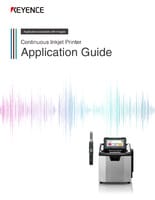
This guide explains continuous inkjet (CIJ) printer applications together with pictures and illustrations. It contains many installation examples in various industries divided into food, medicine, and cosmetics; electrical machinery and electronics; and automotive, metal, and others. These examples show printing on targets specific to each industry.
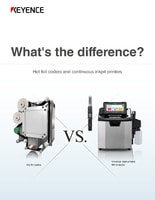
This guide explains the printing principles and the workflow up to printing by comparing hot foil coders and continuous inkjet (CIJ) printers. Both machines are analyzed from the aspects of productivity, quality, management, and running costs. Tips for solving accidents caused by date coding mistakes are also described.
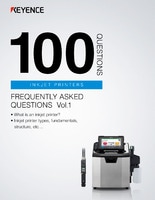
This is a technical guide describing basic knowledge of continuous inkjet (CIJ) printers from mechanisms such as the types, printing fundamentals, and internal structure, to running costs and legal compliance. Subsequent issues will also be available. By reading all of these issues, you can understand the entire overview of continuous inkjet (CIJ) printers.
![Inkjet Printer Tech Guide [BASIC KNOWLEDGE EDITION]](/img/asset/AS_114378_L.jpg)
Continuous inkjet (CIJ) printers work by discharging ink particles to print information such as characters and figures on targets. This document describes the differences between industrial use inkjet printers and office-use printers, as well as their structures, circulation principles, and application examples.
